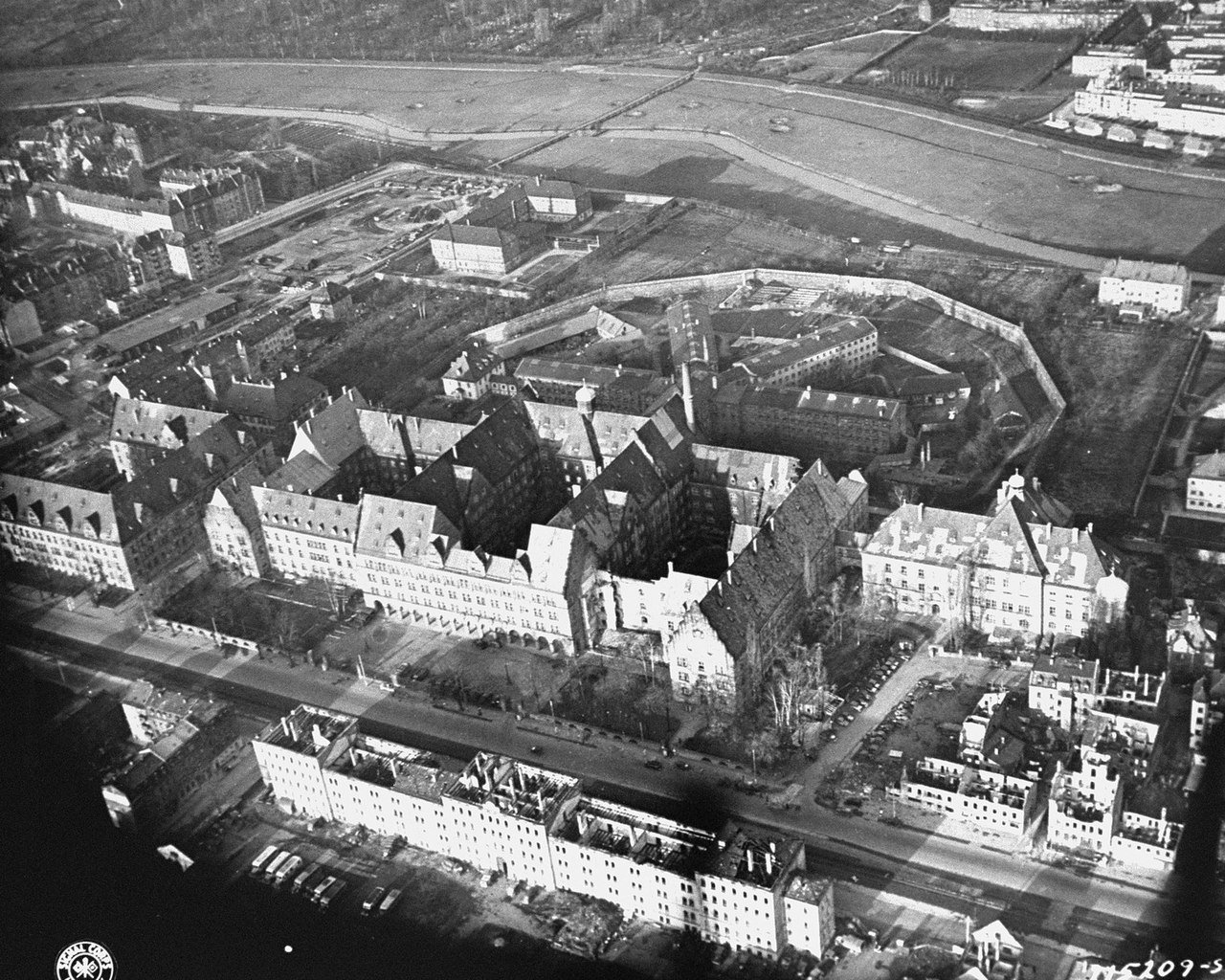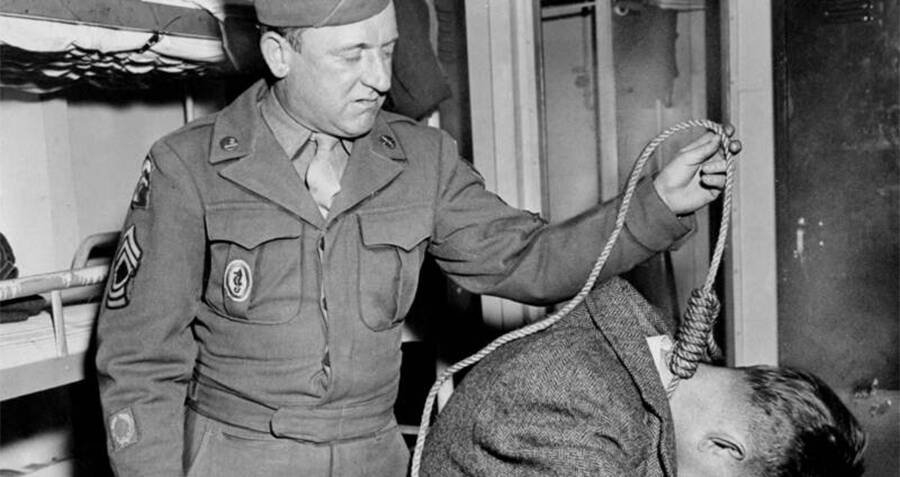
The Nuremberg Trials
After the war, Allied powers—United States, Great Britain, France, and the Soviet Union—came together to form the International Military Tribunal (IMT). From 1945 to 1946, Nazi Germany leaders stood trial for crimes against peace, war crimes, crimes against humanity, and conspiracy to commit any of the foregoing crimes.
The indictment against 24 major war criminals and seven organizations was filed on October 18, 1945 by the four chief prosecutors of the International Military Tribunal. On November 20, the trial began with 21 defendants appearing before the court. The United States held 12 additional trials in Nuremberg after the initial International Military Tribunal. In all, 199 defendants were tried, 161 were convicted, and 37 were sentenced to death.
APPOINTING THE COURT
In the days before Germany surrendered on May 8, 1945, President Harry S Truman appointed Associate Supreme Court Justice Robert H Jackson to be the chief prosecutor representing the United States in the proposed trials for the European Axis powers. Jackson helped lead the Allies—American, British, French, and Soviet governments—to an agreement called the London Charter, setting the procedures for the Nuremberg Trials. The London Agreement created the International Military Tribunal (IMT) on August 8, 1945, where each of the four Allied nations appointed a judge and a prosecution team.
INDICTMENT
The indictment of 24 Nazi government officials and organizations was filed on October 18, 1945 by the four chief prosecutors of the International Military Tribunal: Robert H Jackson of the United States, Sir Hartley Shawcross of Great Britain, Francois de Menthon of France, and Roman A Rudenko of the Soviet Union. The jurisdiction of the Tribunal included crimes against peace, war crimes, and crimes against humanity. The IMT defined crimes against humanity as "murder, extermination, enslavement, deportation...or persecutions on political, racial, or religious grounds."
The indictment was read on November 20, 1945 with 21 defendants appearing in court. The suicides of top Nazi leaders such as Adolf Hitler, Joseph Goebbels, and Heinrich Himmler prevented them from standing trial. Head of the German Labor Front, Robert Ley, committed suicide the day before the trial.
List of Defendants
Martin Bormann
Karl Dönitz
Hans Frank
Wilhelm Frick
Hans Fritzsche
Walther Funk
Hermann Göring
Rudolf Hess
Alfred Jodl
Ernst Kaltenbrunner
Wilhelm Keitel
Gustav Krupp von Bohlen und Halbach
Robert Ley
Konstantin von Neurath
Franz von Papen
Erich Raeder
Joachim von Ribbentrop
Alfred Rosenberg
Fritz Sauckel
Hjalmar Schacht
Baldur von Schirach
Arthur Seyss-Inquart
Albert Speer
Julius Streicher
List of Organisations
The Secret State Police (Gestapo)
The Protection Squad (SS)
The Reich Cabinet
The Leadership Corps of the Nazi Party
The Stormtroopers (SA)
The Security Service (SD)
The General Staff and High Command of the German Armed Forces.
VERDICT AND EXECUTIONS
On October 1, 1946, the Tribunal convicted 19 of the defendants and acquitted three. Of those convicted, 12 were sentenced to death. Three defendants were sentenced to life imprisonment and four to prison terms ranging from 10 to 20 years. On October 16, executions were carried out by hanging in the gymnasium of the courthouse. Hermann Göring committed suicide the night before his execution. In 1947, the prisoners sentenced to incarceration were sent to Spandau Prison in Berlin.
Goring under examination
John c Woods (executioner) with his hangman’s Noose
List of Executions
Hermann Göring
Joachim von Robbentrop
Wilhelm Keitel
Ernst Kaltenbrunner
Alfred Rosenberg
Hans Frank
Wilhelm Frick
Julius Streicher
Fritz Sauckel
Alfred Jodl
Arthur Seyss-Inquart
Additional Nuremberg Trials
Doctors' Trial
Milch Trial
Judges' Trial
Pohl Trial
Flick Trial
IG Farben Trial
Hostages Trial
RuSHA Trial
Einsatzgruppen Trial
Krupp Trial
Ministries Trial
High Command Trial
THE TRIAL
Between November 20, 1945 to October 1, 1946, the Tribunal tried 24 of the most important military and political leaders of the Third Reich and heard evidence against 21 of the defendants. During the trial, the Tribunal—and the world—learned about the the Nazi Party and its "planning, initiating and waging of aggressive war" from the beginning. Footage of Nazi concentration camps taken by Allied military photographers during liberation was shown to the court. The graphic scenes of what had taken place in Europe were the most powerful evidence presented at the trial. Other memorable moments of the trial were the screenings of the Nazi Concentration and Prison Camps and The Nazi Plan films, the detailed description of the Final Solution, the murders of prisoners of war, atrocities in extermination camps, and countless cruel acts to prosecute Jews.
SUBSEQUENT NUREMBERG TRIALS
From December 1946 to April 1949, a series of twelve additional military tribunals for war crimes against Nazi Germany leaders were held by the United States in the Palace of Justice. The defendants were 177 high-ranking physicians, judges, industrialists, SS commanders and police commanders, military personnel, civil servants, and diplomats. The trials uncovered the German leadership that supported the Nazi dictatorship. Of the 177 defendants, 24 were sentenced to death, 20 to lifelong imprisonment, and 98 other prison sentences. Twenty five defendants were found not guilty. Many of the prisoners were released early in the 1950s as a result of pardons. Thirteen of the 24 death sentences were executed.
To ensure that “justice” was done at Nuremberg, American occupation officials set German war criminals free decades ahead of schedule. Click the Picture
Have a front row seat at the Nuremburg trials!




